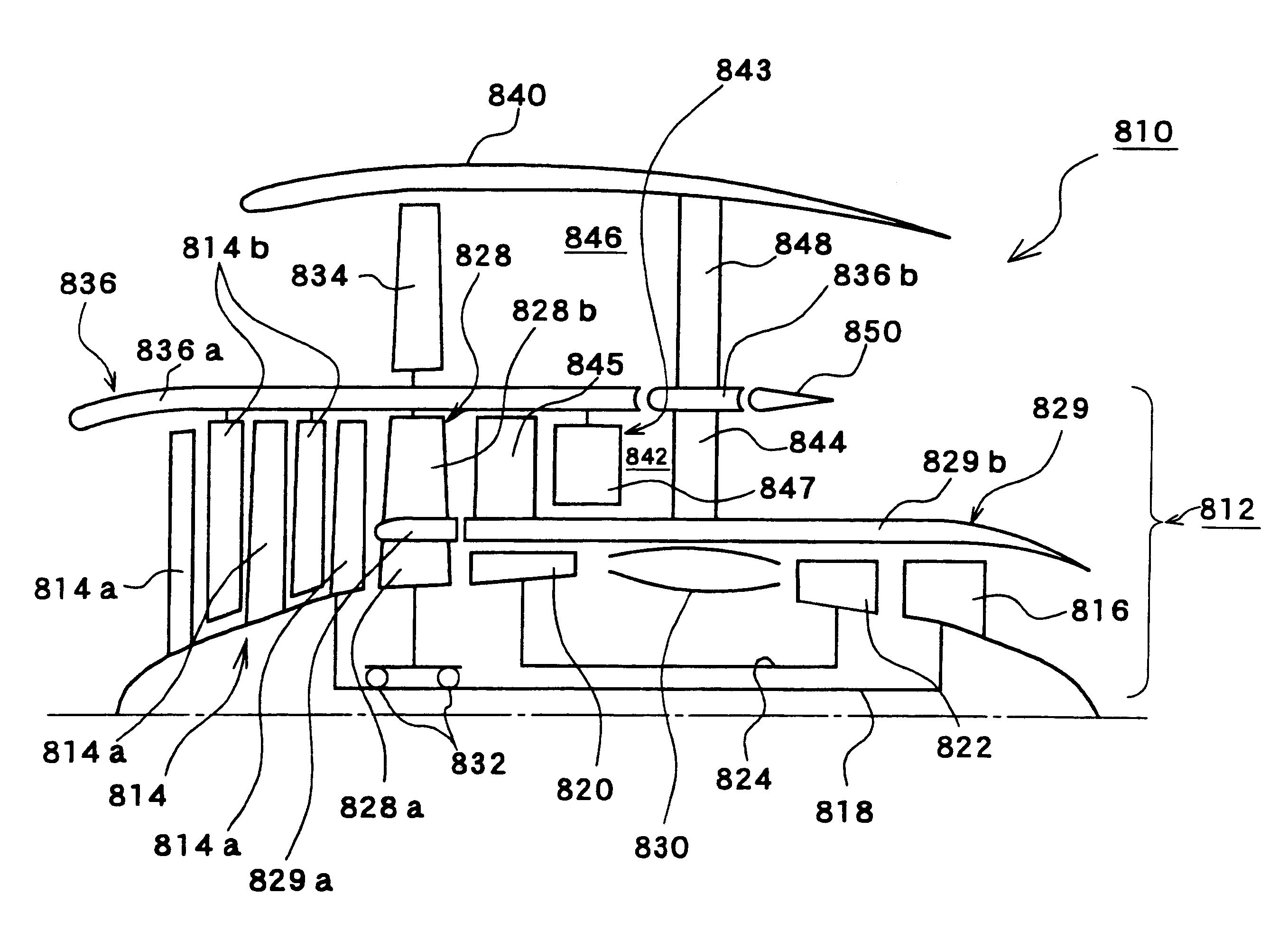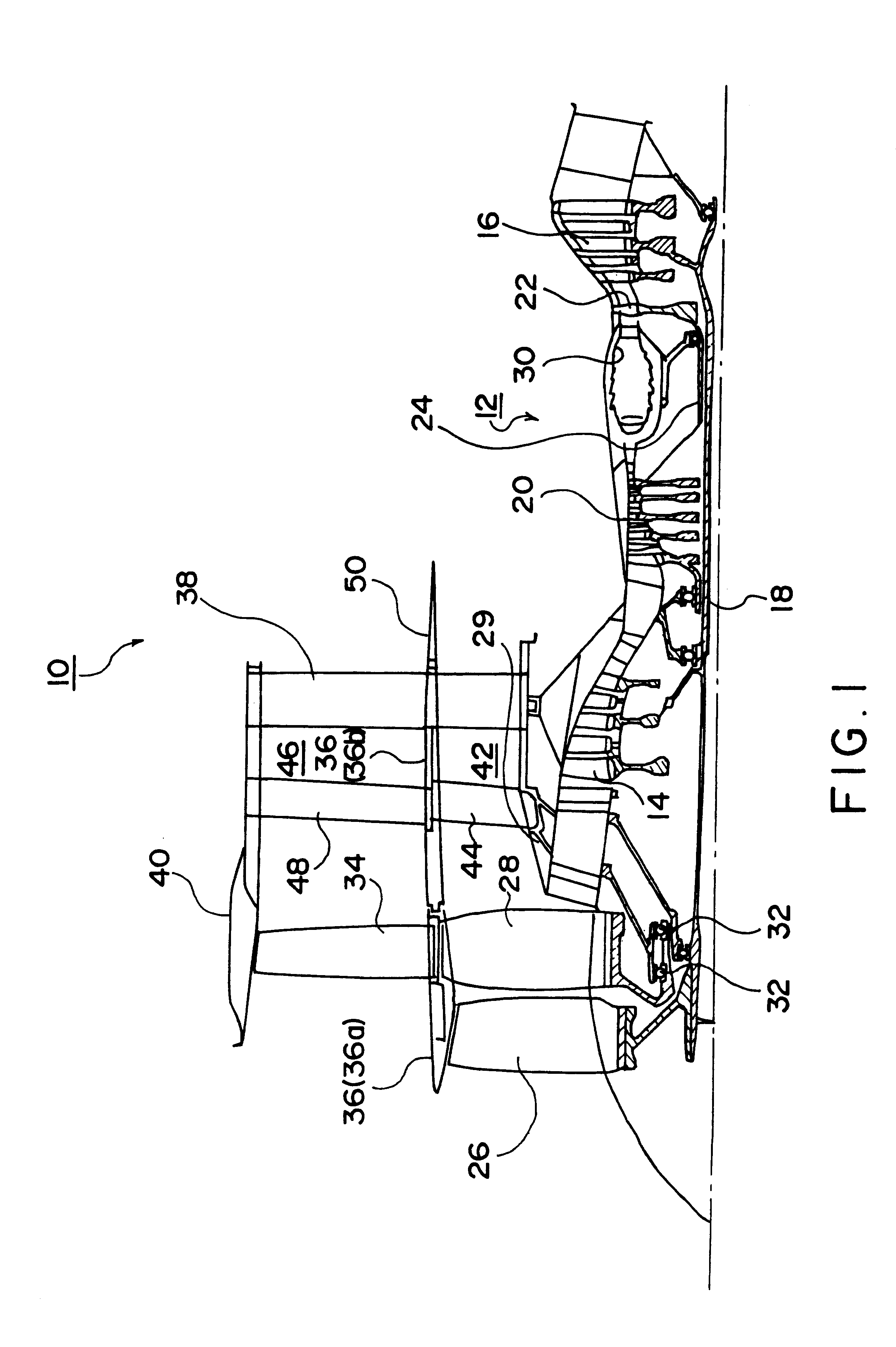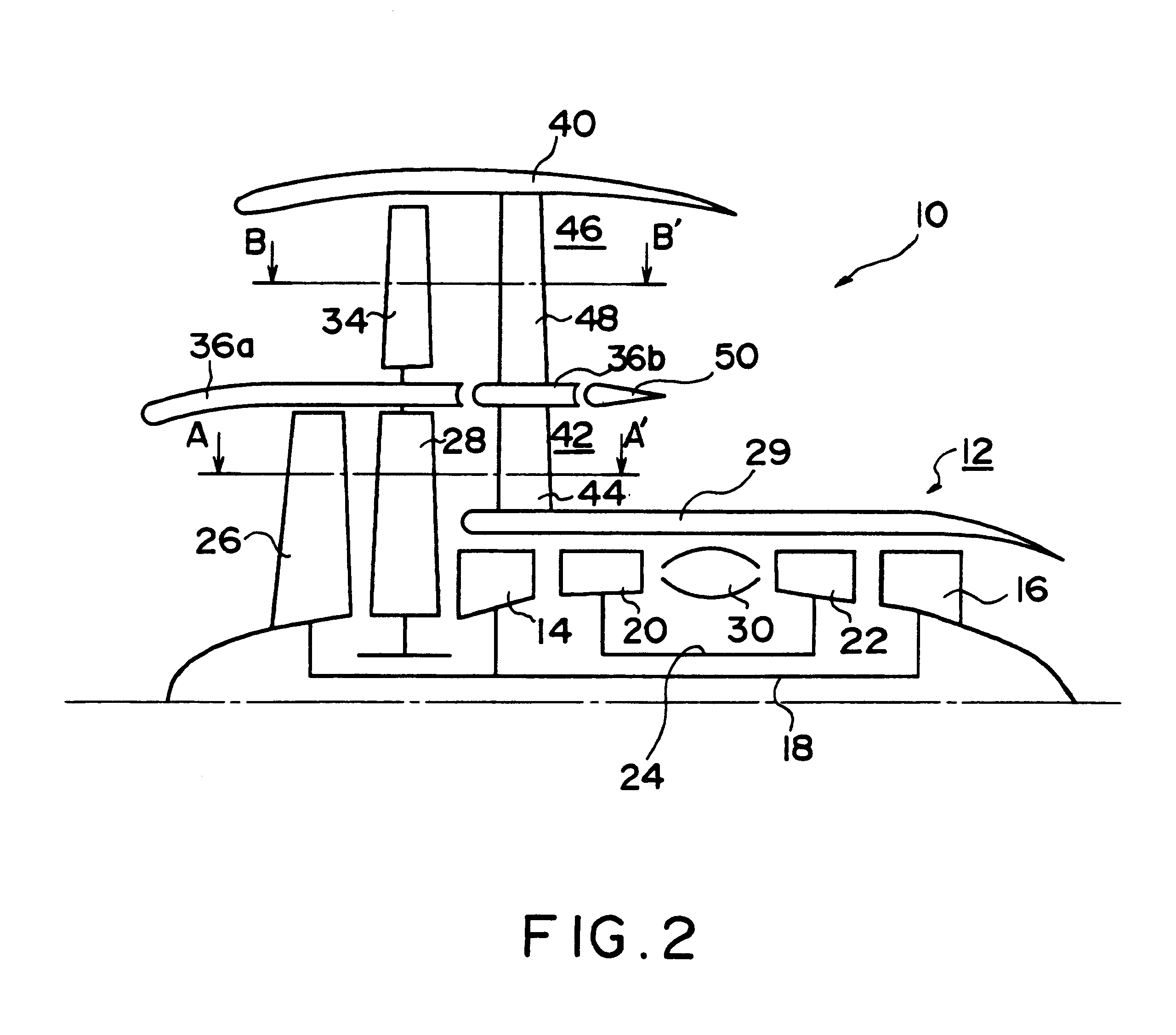Turbofan engine including fans with reduced speed
a technology of reducing speed and turbine engine, which is applied in the direction of machines/engines, sustainable transportation, mechanical equipment, etc., can solve the problems of reducing the efficiency of the propeller of the fan, increasing the peripheral speed of the fan, and generating shock waves
- Summary
- Abstract
- Description
- Claims
- Application Information
AI Technical Summary
Benefits of technology
Problems solved by technology
Method used
Image
Examples
first embodiment
Preferred embodiments of the present invention will next be described with reference to the drawings. FIG. 1 schematically shows the structure of a turbofan engine 20 according to the A core engine 12 of a dual shaft type includes an inner shaft 18 connecting a low-pressure compressor 14 and a low-pressure turbine 16, and an outer shaft 24 connecting a high-pressure compressor 20 and a high-pressure turbine 22. The inner shaft 18 extends upstream and has a forward end connected to an impeller 26. The air channeled downstream by the impeller 26 passes through an air turbine 28, described hereafter, and the air inside a first flow splitter 29 is compressed by the low-pressure and high-pressure compressors 14 and 20 to be directed into a combustion chamber 30. Fuel supplied to the inside of the combustion chamber 30 burns therein and the burnt gas rotates the high-pressure and low-pressure turbines 22 and 16. The gas flowing past the low-pressure turbine 16 is ejected from an exhaust ...
eighth embodiment
FIG. 12 schematically shows the structure of a turbofan engine 710 according to the present invention. In the description of this embodiment as well, components described in connection with the above embodiments are denoted by the same numerals, and their description will not be repeated. According to this embodiment, the fan 734 and a mechanism for transmitting the rotation of the output shaft of the core engine at a reduced speed to a fan 734 are disposed downstream of a core engine 712. The output of the core engine is directed downstream by an inner shaft 718 to drive an impeller 726. The airflow produced by the impeller 726 rotates an air turbine 728, and is channeled through the inner bypass 42 to be ejected downstream. Such ejection flow generates a part of propulsion force. Rotation of the air turbine 728 causes the fan 734 provided integrally at the outside thereof to rotate. The fan 734 produces an airflow in a rearward direction, providing a major part of the propulsion f...
ninth embodiment
FIG. 13 schematically shows the structure of a turbofan engine 810 according to the present invention. A core engine 812 of a dual shaft type includes an inner shaft 818 connecting a low-pressure compressor 814 and a low-pressure turbine 816, and an outer shaft 824 connecting a high-pressure compressor 820 and a high-pressure turbine 822. An air turbine 828 is provided downstream from the low-pressure compressor 814, and rotated by the airflow produced by the low-pressure compressor 814. The air turbine 828 includes an air turbine splitter 829a for dividing an inner part 828a and an outer part 828b of the air turbine 828. Amain splitter 829b is provided downstream from the air turbine splitter 829a. These two splitters 829a and 829b constitute an inner splitter 829.
The inner part 828a of the air turbine supports the outer part 828b, and has a blade profile that is in line with the airflow discharged from the low-pressure compressor 810 and that does not impede the airflow channeled ...
PUM
 Login to View More
Login to View More Abstract
Description
Claims
Application Information
 Login to View More
Login to View More - R&D
- Intellectual Property
- Life Sciences
- Materials
- Tech Scout
- Unparalleled Data Quality
- Higher Quality Content
- 60% Fewer Hallucinations
Browse by: Latest US Patents, China's latest patents, Technical Efficacy Thesaurus, Application Domain, Technology Topic, Popular Technical Reports.
© 2025 PatSnap. All rights reserved.Legal|Privacy policy|Modern Slavery Act Transparency Statement|Sitemap|About US| Contact US: help@patsnap.com



